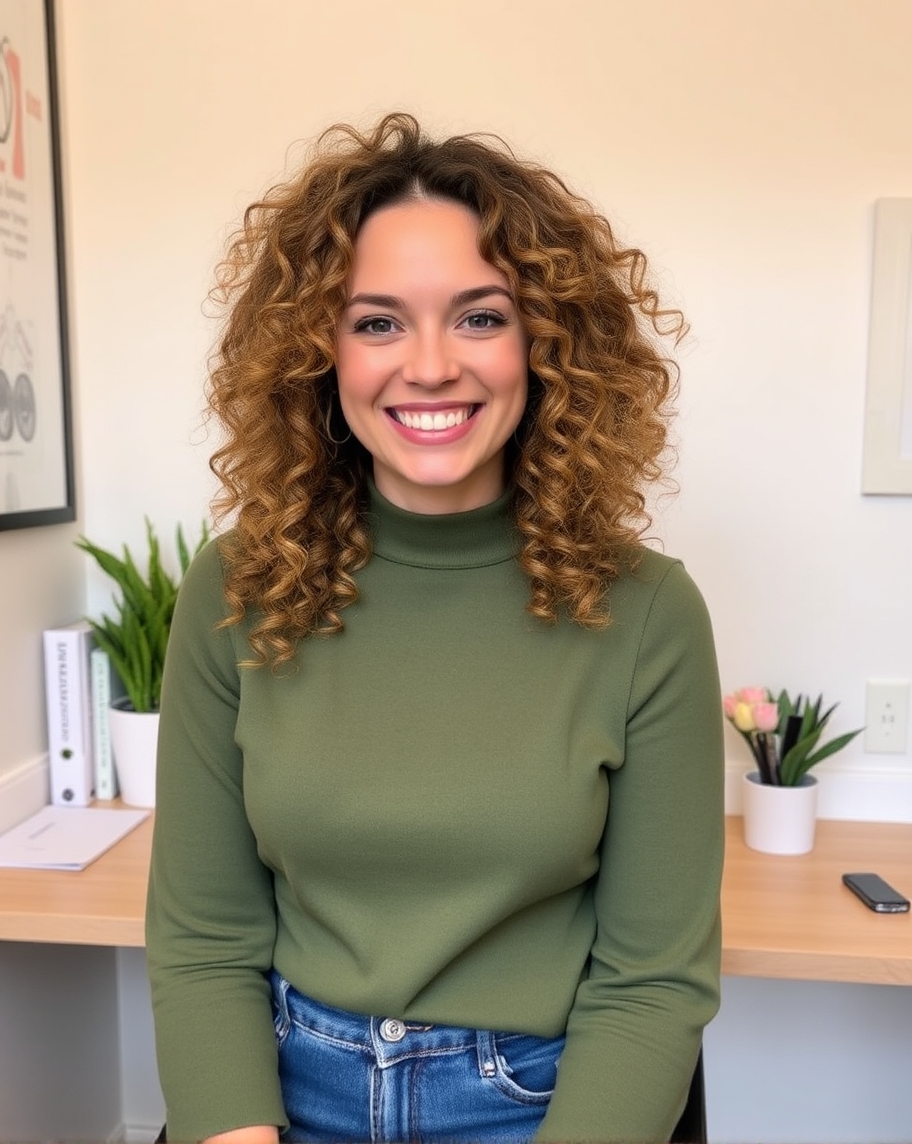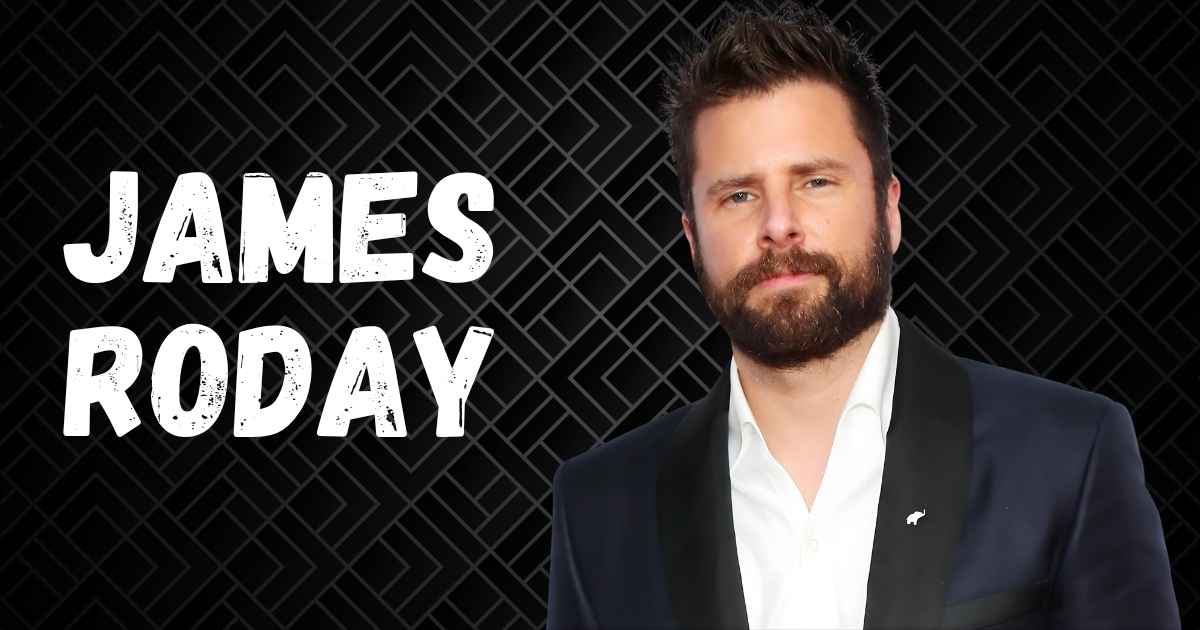When James Roday Rodriguez collapsed, nobody saw it coming. The beloved “Psych” star had always appeared healthy and energetic on screen. Yet beneath that confident exterior lurked a serious congenital heart defect. His story isn’t just celebrity gossip it’s a vital heart health awareness lesson for everyone. Heart disease doesn’t discriminate based on fame or age.
This comprehensive guide explores his cardiac journey, recovery process, and the critical lessons we can all learn.
Quick Biography: James Roday Rodriguez
James David Rodriguez known professionally as James Roday Rodriguez entered the world on April 4, 1976, in San Antonio, Texas. His Mexican-American heritage shaped his artistic sensibility from childhood. After studying at NYU’s Experimental Theatre Wing, he transformed into the charismatic detective Shawn Spencer. “Psych” ran from 2006 to 2014, making him a household name. Today, he balances acting with directing and advocacy work.
| Detail | Information |
| Birth Name | James David Rodriguez |
| Birth Date | April 4, 1976 |
| Birthplace | San Antonio, Texas |
| Education | NYU Experimental Theatre Wing |
| Breakthrough Role | Shawn Spencer in “Psych” |
| Current Work | “A Million Little Things,” Directing |
Early Life and Background: The Making of a Star
Growing up in San Antonio meant cultural richness surrounded James constantly. Theater called to him early school plays became his sanctuary. Despite family expectations for traditional careers, he chose performance. New York City beckoned after high school graduation. The move wasn’t easy; struggling actors rarely have smooth journeys. Off-Broadway productions taught him resilience and craft. Those formative years built work ethic that would serve him during recovery. Little did he know his heart harbored a secret.
Heart Health Journey Timeline
Understanding James Roday’s cardiac issues requires examining the complete timeline. Heart problems don’t suddenly appear without warning signs. His journey spans decades, from undiagnosed congenital heart defect to emergency intervention. Let’s explore each critical phase thoroughly.
Before the Heart Attack
The entertainment industry demands brutal schedules and endless stress. Long shooting days left little time for self-care. James likely ignored subtle signs his body sent. Chest discomfort during stressful scenes? Probably just anxiety. Unusual fatigue after twelve-hour workdays? Everyone feels tired, right? These rationalizations are dangerously common among busy professionals.
His ventricular septal defect a hole between heart chambers existed since birth. This congenital condition means his heart worked harder than normal hearts. For years, compensation mechanisms masked the underlying cardiac issues. Diet consisted of whatever craft services provided on set. Exercise routines became sporadic at best. Stress management took a backseat to career ambitions.
Warning signs people commonly dismiss include:
- Persistent chest discomfort that comes and goes
- Shortness of breath during normal daily activities
- Unexplained fatigue that rest doesn’t resolve
- Jaw pain or arm discomfort without obvious cause
- Increased heart palpitations during rest periods
The Heart Attack
The James Roday heart attack represented a critical turning point. While exact dates remain private, reports suggest complications from his congenital issues triggered the cardiac event. Emergency medical intervention became absolutely essential. Paramedics rushed him to the hospital where doctors discovered the severity. His ventricular septal defect had finally compromised heart function beyond compensation.
Medical teams performed emergency procedures to stabilize him. Heart surgery addressed the congenital defect directly. The operation required skilled cardiac surgeons and precise timing. Those first hours determined everything about his future recovery. Family members waited anxiously for updates from medical staff. Social media erupted with concern from devoted fans worldwide.
Recovery and Rehabilitation
Hospital discharge marked just the beginning of healing. Cardiac rehab programs became his new daily routine. Physical therapists designed exercise protocols specifically for cardiac patients. Starting with short walks, he gradually rebuilt cardiovascular endurance. Medication management required strict adherence and careful monitoring. Follow-up appointments tracked progress through various cardiac health metrics.
The rehabilitation process involved:
- Supervised exercise sessions three times weekly initially
- Medication to manage blood pressure and prevent complications
- Dietary consultations with nutritionists specializing in heart wellness
- Psychological support for emotional recovery challenges
- Regular stress tests to evaluate heart function improvements
The Sudden James Roday Heart Attack: A Wake-Up Call
Life-altering moments arrive without invitation or warning. For James, his cardiac event shattered comfortable assumptions about invincibility. “You never think it’ll happen to you,” survivors often reflect. The James Roday heart attack forced immediate perspective shifts about mortality. Doctors explained how his congenital condition had been ticking away silently.
Statistics reveal sobering truths about cardiac issues in younger demographics. Heart attacks increasingly affect people under fifty stress, poor diet, and genetics create perfect storms. James embodied the “it won’t happen to me” mentality common among busy professionals. His experience demonstrates that heart health awareness matters regardless of age.
The wake-up call extended beyond physical health. Career priorities suddenly seemed less important than survival. Family relationships gained new significance and depth. Every heartbeat became a gift rather than automatic function. This psychological shift drives many survivors toward advocacy and lifestyle transformation.
Understanding Heart Attacks: Causes and Risk Factors
A heart attack occurs when blood flow to heart muscle becomes blocked. Coronary artery disease typically causes these blockages through plaque buildup. But congenital defects like James’s ventricular septal defect add complexity. His heart’s structural abnormality created unique cardiovascular challenges that standard risk assessments might miss.
Modifiable risk factors include choices we control daily:
- High blood pressure damages arteries over time
- Elevated cholesterol levels accelerate plaque formation
- Smoking destroys vascular health systematically
- Diabetes complications affect heart tissue profoundly
- Obesity strains cardiovascular systems unnecessarily
- Sedentary lifestyles weaken heart muscle gradually
- Poor dietary habits fuel inflammation and disease
- Chronic stress elevates hormones that damage hearts
Non-modifiable factors remain beyond our control:
- Age increases risk as years accumulate
- Gender affects timing men face earlier cardiac issues
- Family history and genetics predetermine some vulnerability
- Congenital conditions like James’s birth defect
Heart attack symptoms in younger adults often differ from classic presentations. Subtle signs get dismissed as stress or indigestion. Jaw pain might seem like dental issues. Chest discomfort comes and goes unpredictably. Early detection requires paying attention when bodies signal distress.
The Road to Recovery: Overcoming the Physical and Emotional Impact
Recovery encompasses far more than physical healing alone. James faced multiple interconnected challenges simultaneously body, mind, and lifestyle all required transformation.
Physical Recovery
Cardiac rehabilitation became James’s new full-time commitment. Exercise prescriptions started conservatively and progressed methodically. Walking five minutes daily evolved into thirty-minute sessions gradually. Heart-healthy diet implementation meant relearning food relationships completely. Mediterranean diet principles olive oil, fish, vegetables, whole grains replaced convenient processed options.
Weight management goals aligned with cardiac health priorities. Medication compliance wasn’t optional but absolutely essential. Blood pressure pills, cholesterol management, anticoagulants each served specific protective functions. Regular cardiology check-ups monitored heart function through echocardiograms and stress tests. Physical recovery timelines vary dramatically between individuals based on numerous factors.
Emotional Recovery
Surviving a cardiac event creates profound psychological impacts. Fear, anxiety, and depression commonly afflict heart attack survivors. James likely experienced worry about recurrence constantly. Every chest sensation triggered panic is this another attack? Post-traumatic stress from medical trauma affects many patients deeply.
Therapy sessions provided safe spaces for processing complex emotions. Support groups connected him with others facing similar journeys. Sharing fears with people who truly understand creates powerful healing. Coping mechanisms developed through professional guidance included mindfulness meditation and breathing exercises. Emotional recovery often takes longer than physical healing.
Lifestyle Changes
Comprehensive transformation became necessary for long-term heart wellness. Dietary overhaul eliminated inflammatory foods and embraced heart protection. Omega-3 fatty acids from fish, fiber from vegetables, antioxidants from berries each ingredient served healing purposes. Exercise routines balanced cardio, strength training, and flexibility work.
Sleep hygiene improvements ensured adequate rest for cardiac repair. Stress management techniques meditation, yoga, breathing exercises became daily practices. Work-life balance recalibration meant setting boundaries previously nonexistent. The James Roday heart attack taught him that sustainable lifestyle shifts outweigh temporary fixes dramatically.
Professional Life: Balancing Career and Health After the James Roday Heart Attack
Returning to Hollywood’s demanding environment required careful navigation. Production schedules needed modifications to accommodate health priorities. “A Million Little Things” provided opportunities while respecting recovery needs. Directors and producers showed understanding about medical limitations thankfully.
Setting boundaries represented a revolutionary concept for achievement-oriented actors. Choosing projects aligned with wellness rather than purely career advancement. Speaking openly about health challenges in interviews helped destigmatize cardiac issues. Advocacy work developed alongside acting career naturally and authentically.
Professional adjustments included:
- Limiting consecutive shooting days to prevent exhaustion
- Incorporating meditation routines between scenes regularly
- Maintaining strict dietary requirements even on location
- Prioritizing adequate sleep over networking events
- Directing projects that offered less physical demands
The Importance of Heart Health Awareness: Lessons from Roday’s Experience
James Roday’s story resonates because cardiac health affects everyone eventually. Heart disease remains America’s leading killer one death every 33 seconds. Younger individuals increasingly experience cardiac events previously considered “old person problems.” The danger of assuming you’re immune based on age creates preventable tragedies.
Cardiovascular awareness campaigns save lives through education and early intervention. Regular screenings detect problems before they become catastrophic. Blood pressure readings, cholesterol panels, blood sugar tests these simple measures identify risks early. Breaking stigma around discussing heart wellness openly encourages preventive action.
Men particularly struggle with seeking medical attention promptly. Cultural conditioning teaches toughness over prudence dangerously. James’s willingness to share his experience inspires others toward proactive care. Social media amplifies these vital heart talks exponentially. One person’s vulnerability creates ripples affecting thousands positively.
Preventive Measures: How to Protect Your Heart
Prevention dramatically outperforms treatment in both outcomes and quality of life. Heart protection begins with daily choices, not emergency interventions.
Essential Preventive Actions:
- Adopt Heart-Healthy Diet Patterns
- Emphasize fruits, vegetables, whole grains, lean proteins
- Limit saturated fats, trans fats, sodium, added sugars
- Practice portion control and mindful eating habits
- Maintain Regular Physical Activity
- Aim for 150 minutes moderate aerobic exercise weekly
- Include strength training twice weekly minimum
- Find enjoyable activities to ensure consistency
- Manage Stress Effectively
- Practice meditation or mindfulness daily
- Ensure 7-9 hours quality sleep nightly
- Cultivate meaningful social connections regularly
- Schedule Regular Medical Screenings
- Annual physicals catch problems early
- Monitor blood pressure at home between visits
- Know your family history and discuss with doctors
- Recognize Warning Signs Immediately
- Chest pain or discomfort requires immediate attention
- Shortness of breath during normal activities signals trouble
- Unusual fatigue shouldn’t be dismissed casually
Heart risk reduction involves consistent daily habits rather than occasional efforts. Small choices compound into major health outcomes over time.
The Role of Family and Support Systems in Recovery
Recovery success depends heavily on strong support networks. Emotional care from loved ones provides irreplaceable healing power. Family members attended medical appointments, learned CPR, and recognized emergency symptoms. Practical assistance with daily tasks allowed James to focus on healing completely.
Dietary changes affecting entire households create accountability and encouragement. Exercise partners transform rehabilitation from chore to connection. Children’s involvement when age-appropriate helps families process scary medical events together. Caregiver burnout prevention ensures sustainable support throughout long recovery periods.
Support systems include:
- Immediate family providing daily emotional and practical help
- Extended relatives creating backup care networks
- Friends offering companionship during challenging moments
- Support groups connecting survivors and caregivers
- Online communities sharing experiences and advice
- Professional counselors guiding families through adjustments
James Roday’s Advocacy for Heart Health Awareness
Using his platform for heart health promotion demonstrates genuine commitment. Public awareness campaigns benefit from celebrity participation tremendously. James’s willingness to discuss his congenital heart defect and subsequent cardiac event educates millions. Health campaigns reach broader audiences when familiar faces share vulnerable experiences.
His advocacy work likely includes:
- Sharing recovery journey through interviews and social media
- Partnering with heart health organizations for screenings
- Encouraging regular check-ups and preventive care publicly
- Destigmatizing conversations around men’s cardiac health
- Supporting research funding for congenital heart conditions
Authentic storytelling creates powerful ripple effects beyond immediate audience. Health-focused choices become normalized rather than exceptional. Future generations benefit from reduced stigma and increased awareness today.
Conclusion
James Roday Rodriguez’s journey from cardiac crisis to recovery offers hope and vital lessons. His congenital heart defect a ventricular septal defect present since birth finally demanded attention through a serious cardiac event. The James Roday heart attack became a transformative wake-up call about prioritizing heart health over career demands constantly.
Recovery required comprehensive transformation physical rehabilitation, emotional healing, and lasting wellness habits. Professional adjustments demonstrated that career success means nothing without health foundation. His advocacy work spreads cardiovascular awareness to audiences who might otherwise ignore heart health importance.
Prevention dramatically outweighs treatment in both outcomes and life quality. Schedule that overdue check-up today, not tomorrow. Start heart-healthy eating this week, not next month. Exercise begins with single steps, not marathon dreams. Your heart deserves the same attention you give career and family.
Recovery is possible. Life continues meaningfully after cardiac events. James proves that heart attack survivors can thrive, not merely survive. Share this article with loved ones who need this information. Heart health awareness saves lives maybe yours, maybe someone you love.
FAQs
What caused James Roday’s heart attack?
Congenital heart defect, not an actual heart attack occurred.
What are common symptoms of a heart attack in younger adults?
Chest pain, fatigue, nausea, jaw discomfort, shortness of breath.
How did James Roday recover from his heart attack?
Cardiac rehab, medication, emotional support, lifestyle improvements, dedication.
Did James Roday return to acting after his heart attack?
Yes, acting resumed with health-focused, balanced role selections.
What lifestyle changes did James Roday make post-heart attack?
Adopted healthier diet, routine exercise, stress-reduction, better sleep.
How has James Roday’s experience raised heart health awareness?
His story sparked discussions, emphasized screenings, encouraged preventive measures.
What role did family support play in James Roday’s recovery?
Provided emotional care, consistent encouragement, crucial during recovery process.
Is James Roday involved in heart health advocacy?
Yes, actively promotes screenings and heart health awareness campaigns.
What can others learn from James Roday’s experience?
Prioritize heart health, recognize symptoms early, embrace preventative practices.
What preventive measures can reduce the risk of a heart attack?
Healthy diet, regular exercise, stress management, routine health checks.

Welcome to Azaad Bites! I’m the creator and heart behind this site, a passionate foodie with a love for all things delicious. Cooking has been my creative outlet and joy for years, and I’m here to share my favorite recipes, cooking tips, and food discoveries with you. From comforting classics to bold new flavors, I believe that every dish tells a story, and I can’t wait to share mine with you. Whether you’re a seasoned chef or a kitchen newbie, I hope to inspire you to explore the world of food and drink with a dash of curiosity and a lot of flavor.

